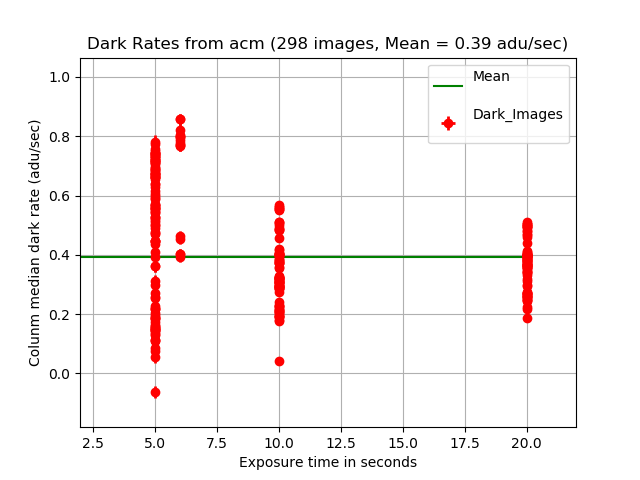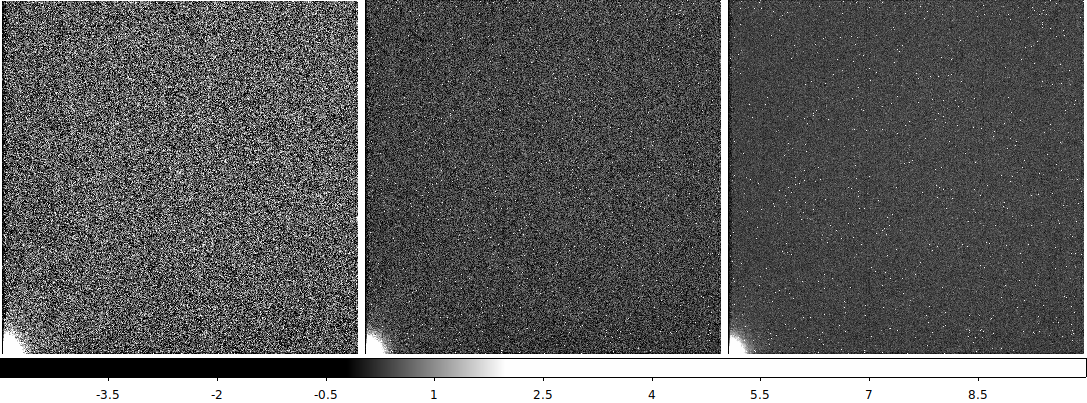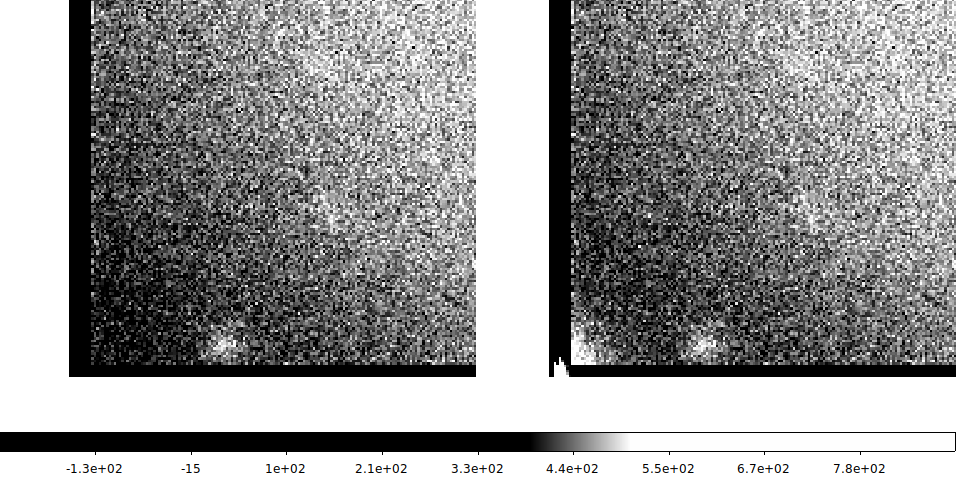The acm image dark rate is usually around 0.5 adu/sec for exposure with
exposure times of 20 seconds or less. In March2019 I developed the acm_BigRed
routine and used it to process 36 nights of acm data. iWith the estimated
dark rate of 05. adu/sec, I need to use dark frames from nights where good
bias frames were taken, othewise small errors in the assumed mean bias
level will dominate the dark rate derivations. In the course of my early
March2019 work I found the that many of the darks from early 2018 (Feb2018 and
earlier) seemed to be contaminated by lscattered light in the PFIP. Hence, I used a
smaller subest of available nights. Below are the nights I will use.
Basepath used = /home/sco/AD/HET_work/acm_nights
Original number of nights to be surveyed = 36
Date Nimages Nbias Ndark Nopen Nnone
20180402 145 19 97 29 0
20180403 133 15 15 103 0
20180404 112 15 49 48 0
20190205 771 32 5 463 271
20190206 97 28 63 6 0
20190217 585 11 12 552 10
20190219 113 56 57 0 0
TEMP NOTES:
- Need to remove 20180105. 20170906 (some light source was on in PFIP)
- Need table_point_selector to make: table_point_selector.images
The procedure I use to mak a quick first dtufy using processed images is described below.
I use only nights that had bot bias and dark frames. By processed I mean the image headers have been
revised and the bias and fixe bias pattern signals have been subtracted.
In each date directory of usable nights I want to run:
image_fullpath_list list.DARK FIXUP list.dset N
I wrote dlists.bash to do this for a list of nights this script writes the
fullpath processed image names # to the file: List.Processed_DARK
# This typically takes less than a minute to run on scohome2.
cd /home/sco/ACM_BIAS_STUDY/reds4
./dlists.bash list.Date_darks
I move List.Processed_DARK into ./Dark_study_1/
Then I build the table of dark image data
acm_dark_table List.Processed_DARK N
This creates the DARKS table file. I can then use point_selector on the
DARKS table file to view the dark rates.
For examples: point_selector DARKS exp drate1 N
point_selector DARKS d2000 drate1 N
Generic_Points ; xyplotter_auto DARKS q q 20 N
I have decided to modify the acm_process.sh script so that it performs the
2-d dark subrtaction using a choice of one of the dark rate images above.
To invesigate how well this works I make visual inspections of the final processed
image from acm_BigRed using this recipe:


